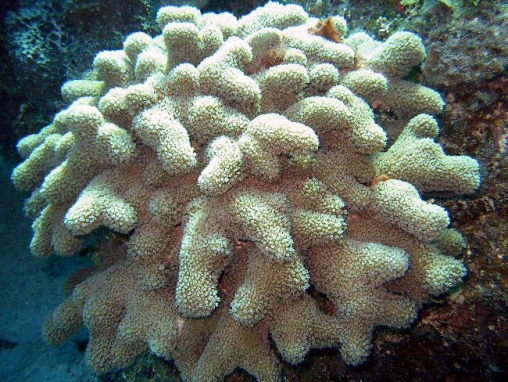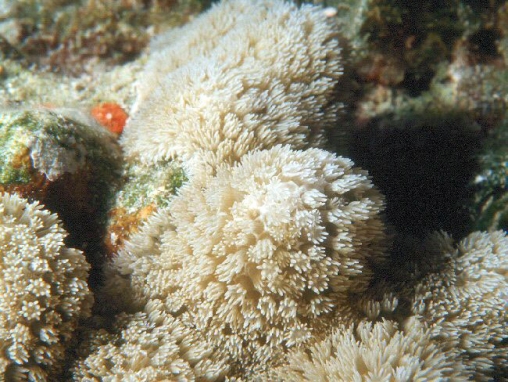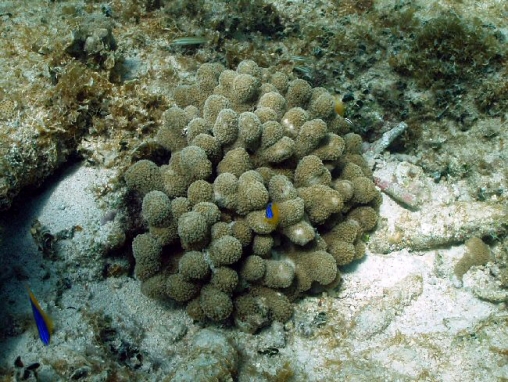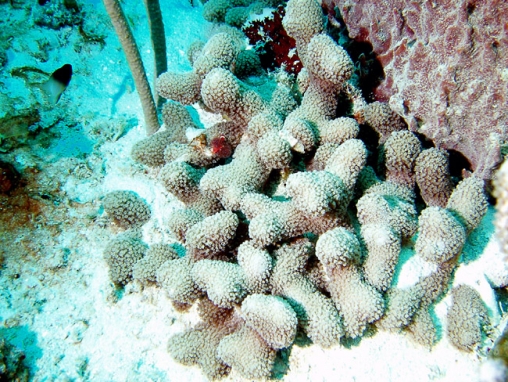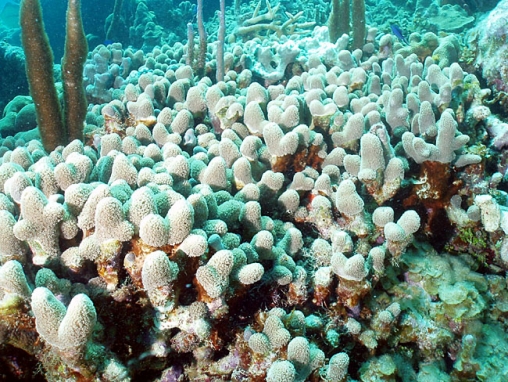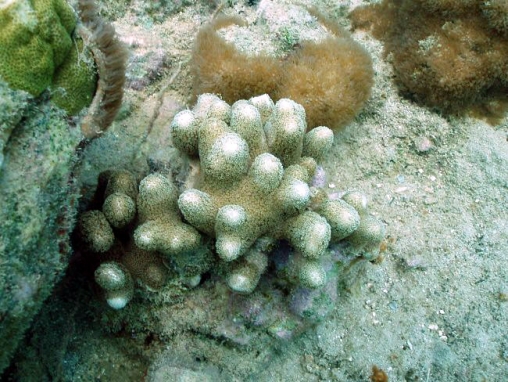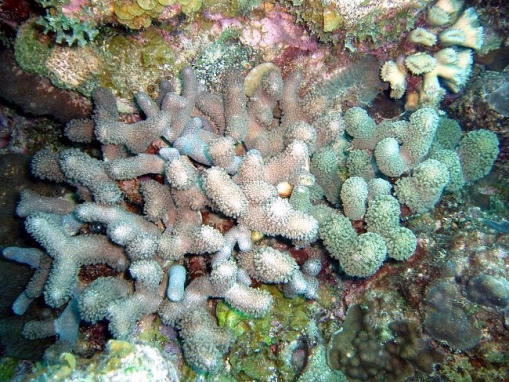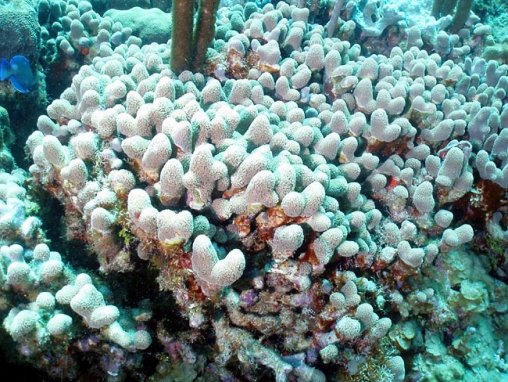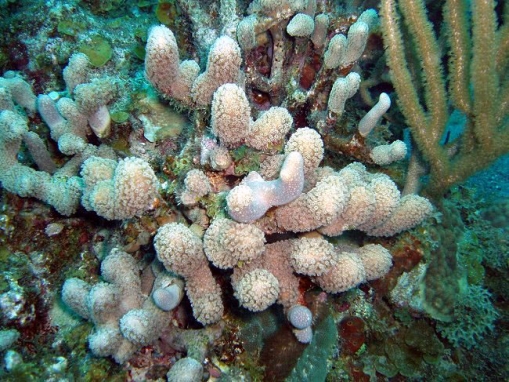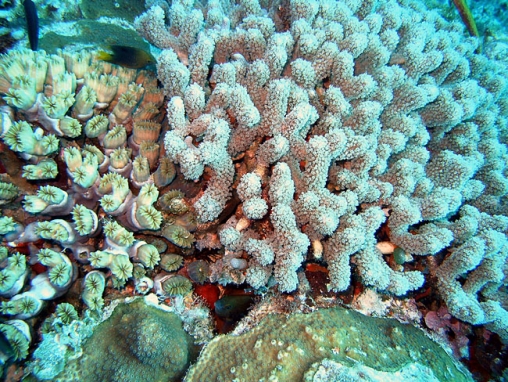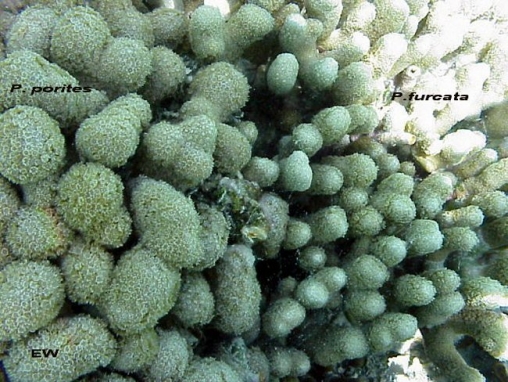Porites porites
This is a branching species with a more sprawling appearance than the other branching Porites. Branches may be curved, hooked or project downwards and sideways, and are thicker with blunt, enlarged tips.
Polyps may be extended during the daylight. The colour is usually grey, occasionally bright blue.
The three branching species are easily confused, and colony shapes overlap . As a general guide:
P. porites - thick branches (>2 cm) may be stubby and little developed with enlarged, blunt tips. Developed branches upright or sprawling, often grey, occasionally bright blue.
P. furcata - extensive colonies with dead basal parts, intermediate width (1-2 cm), elongate, tightly compact, branches all finger-like with rounded tip, often grey.
P. divaricata - branches are the most slender (<1 cm)and widely spaced of these species. They are often divided at their tips, likely to have live tissues at their bases, colours vary from purple, yellow-brown, grey, to brown.
Polyps may be extended during the daylight. The colour is usually grey, occasionally bright blue.
The three branching species are easily confused, and colony shapes overlap . As a general guide:
P. porites - thick branches (>2 cm) may be stubby and little developed with enlarged, blunt tips. Developed branches upright or sprawling, often grey, occasionally bright blue.
P. furcata - extensive colonies with dead basal parts, intermediate width (1-2 cm), elongate, tightly compact, branches all finger-like with rounded tip, often grey.
P. divaricata - branches are the most slender (<1 cm)and widely spaced of these species. They are often divided at their tips, likely to have live tissues at their bases, colours vary from purple, yellow-brown, grey, to brown.
